Elbridge Colby
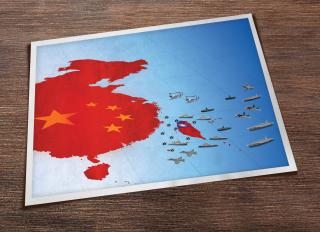
China aspires to dominate the Indo-Pacific region—the impact of which would dramatically undermine Americans’ security, freedom, and prosperity. The only workable strategy is to deny China this goal. The naval services will play a central role.
The primary threat to core U.S. interests is that China could dominate Asia, and from that position atop more than half the global economy, undermine Americans’ prosperity, freedom, and even security. This is not a merely speculative fear. Beijing is pursuing regional hegemony over Asia, and if successful, it will very likely pursue the kind of global preeminence that would enable it to directly intervene in and exercise a domineering influence over Americans’ lives.
As a result, nothing else in the international system is as fundamentally dangerous to U.S. interests as Chinese hegemony over Asia. Accordingly, U.S. policy must prioritize avoiding that outcome, but must do so in ways that correlate the risks and costs the American people incur in doing so with the stakes, which are vital but not genuinely existential. In practice, this requires working together with Asian states in an antihegemonic coalition focused on denying Beijing dominance over the region.
Contrary to some commentary that suggests the military dimension in this dynamic is not that important, the U.S. military’s role in this strategy is central. This is because Beijing will likely not be able to dominate Asia without resorting to military force. While China has enormous and growing economic and other nonmilitary forms of influence, it is finding it difficult to use its leverage to get neighboring countries to accept what would essentially be a tributary relationship. Its efforts to do so have largely backfired—as demonstrated in places such as Australia, India, Japan, and Taiwan—and an increasingly aggressive China’s standing (as reflected in global polling) has declined precipitously.1
The bad news is China has another option: military force. Unlike economic sanctions, decisive and direct military force can compel other countries to do things they really do not want to do.
Coalition: The Center of Gravity
If China can gain sufficient military advantage over its neighbors, it may convince them to accept its hegemony given the plausible alternatives they will face. And the best way for Beijing to operationalize such advantage is not to fight all its potential opponents at once, but to pursue a focused and sequential strategy against the antihegemonic coalition arraying against it, seeking to pick it apart or short-circuit it.
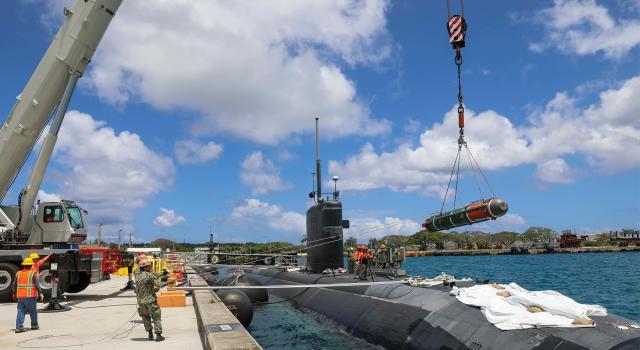
The USS Annapolis (SSN-760) loads a Mk 67 sub-launched mobile mine in Apra Harbor, Guam, in May 2022. Naval mines would contribute directly to a defense of Taiwan by denying the PLA Navy sea control and the ability to project power across the Taiwan Strait. U.S. Navy
The key for Beijing is to strike at the coalition’s center of gravity: perceptions of Washington’s willingness to come to the stout defense of those to which it has committed. Only if they believe Washington can and will stand with them will Asian countries judge it prudent to take the risks necessary to check Beijing’s ambitions. If they do not have this confidence, they will fear being isolated and punished by China and thus will likely cut a deal with Beijing. If Beijing can pick off enough countries in this fashion, it could achieve regional hegemony without having to fight World War III. Indeed, given how sensitive Asian countries are to China’s strength and how lucrative it is to be in its good graces, Beijing may not have to fight many—or even any—wars to attain regional dominance.
A Denial Defense
To prevent this, Washington needs to ensure an effective denial defense along the first island chain, one that includes Taiwan within its perimeter. Denial defense is a military strategy derived from the nation’s geopolitical goal, which is to provide sufficient defense for our allies that they believe it prudent to stand up to China together with us—and thus prevent Chinese domination of Asia. If the United States can succeed in this military strategy, the coalition should stand strong and resist attempts by Beijing to crack it apart. Even better, Beijing might see this strength and never try to break it apart in the first place.
Taiwan plays an especially salient role in this strategy. Washington’s credibility in Asia is, practically speaking, linked to Taiwan’s defense. If Beijing could take Taiwan, it would break out of the first island chain that currently constrains its military power projection. As the recent Congressional Research Service report to Congress on the People’s Liberation Army (PLA) points out, China’s “military strategy focuses primarily on preparing for a conflict involving the United States over Taiwan.” The report also highlights the PLA Navy’s 340-ship fleet, its air forces with several hundred fourth-generation fighters, and a large, advanced conventional missile force.2 Thus, if the United States and its allies can prevent China from subordinating Taiwan, they can protect other U.S. allies in Asia, enabling the coalition to stand strong, checking Beijing’s ambition to regional hegemony.
In practical terms, a denial defense strategy generates a minimum military standard of being able to prevent China from seizing and holding the key territory of our allies—essentially, the core political and economic areas of a country. If China cannot seize and hold these areas, it will not be able to bring enough coercive pressure on a resolute ally to abandon the coalition. History and logic indicate that most countries are prepared to hold on even in the face of bombardment, blockade, and harassment if it is a matter of their independence and autonomy, especially if they believe relief will arrive. Crucially, this creates a need for a forward defense for U.S. allies against China.
Alternative Strategies Will Not Work
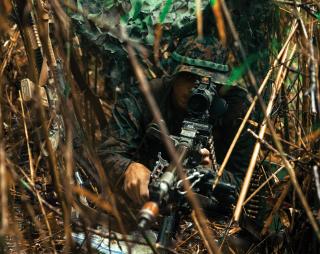
A U.S. Marine sights his weapon in deep jungle vegetation during an exercise in Japan. The Marine Corps’ Force Design 2030 efforts are rightly focused on capabilities that will be brought to bear in a denial strategy. U.S. Marine Corps
Alternative U.S. and allied strategies will not work or will, if attempted, result in costs grossly out of proportion to the stakes for the American people. For example, relying on the threat of large-scale first use of nuclear weapons to defeat a Chinese invasion of Taiwan or other allies is simply not credible; Beijing is unlikely to believe Washington would follow through. And if the United States did, China could respond with a nuclear attack that would leave the United States devastated, without having reversed China’s gains—hardly a good strategy.
Neither would a strategy relying primarily on cost imposition or horizontal escalation be likely to work. Such strategies would emphasize inflicting costs on China, for instance through measures such as blockades and attacks on Chinese interests beyond the first island chain, with the goal of persuading Beijing to relent. To be clear, such measures could be essential or useful elements alongside a denial defense, but not as the primary line of effort for the U.S. and allied militaries.
Horizontal escalation is unlikely to work because Beijing almost certainly would prize victory over Taiwan and in the first island chain over its interests in places such as South Asia, the Middle East, or Latin America. A blockade-reliant strategy is also unlikely to work for several reasons. Militarily, if the United States and its allies do not contest China forward, the PLA could adapt to challenge a distant blockade, negating the strategy over time. Moreover, a strategy relying on blockade would essentially allow China to assault U.S. allies in the western Pacific at will, increasing the chances they would fold and that the coalition—the center of gravity for Washington’s overall strategy—would fail.
Even if effectively implemented, a blockade is unlikely to work as a primary victory mechanism. China has enormous economic capacity and could weather much of the effects of an embargo; indeed, it appears to be strengthening its ability to do so through measures such as dual circulation.3 At the same time, Beijing could reduce the efficacy of such an effort by exploiting sympathetic or profiteering third parties, ranging from Russia through the Middle East and even to parts of Europe. Further, China’s famously strong nationalism will make it willing to put up with a lot of pain to prevail in a conflict over Taiwan.
Finally, full-scale economic warfare against China is a poor strategy for the United States because it does not credibly match the demands of the military strategy with the stakes for the American people. Such an action would be met with a comparable response from Beijing, with devastating consequences for Americans’ livelihoods. Moreover, rather than providing a clear end point and set of escalation boundaries, such a strategy would turn the war into a contest in pain tolerance, and it is highly unlikely that the United States would be more prepared to prevail in such a contest with China over Taiwan and the western Pacific.
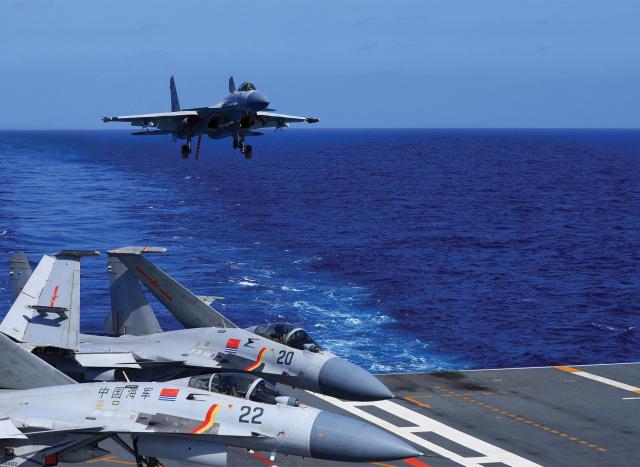
A Chinese J-15 fighter prepares to land on board the aircraft carrier Liaoning during flight operations in December 2021. A denial defense strategy would require containing or sinking PLAN units inside the first island chain. Xinhua/Alamy
Many navalists, however, find horizontal or cost-infliction strategies appealing.4 To advocates of these strategies, navies and their associated forces offer attributes such as global scale, mobility, and the ability to threaten maritime commerce, so why not shape national strategies based on those attributes? But this is the wrong way to approach the problem. The military must conform to the strategy the nation needs, not the other way around. And the strategy the nation needs is a forward denial defense that can prevent China from subordinating U.S. allies along the first island chain in ways that keep the costs and risks to American citizens at a level proportionate to the stakes at issue. If the U.S. military is not so shaped, then it needs to adapt, even if that requires dramatic change.
It is important to emphasize, though, that a forward denial defense is not a static, unimaginative, or fixed defense. It is about meeting a standard—denying China’s ability to subordinate a U.S. ally—not prescribing how to do it. Indeed, forward denial defense is consistent with unorthodox, imaginative, and nonlinear forms of military action and force structure, so long as they materially and efficiently contribute to the goal. It is consistent with any number of different approaches to military operations: high-tech and low-tech; at sea, in the air, space, and cyberspace, and on the ground; at long-range and short. If a naval mine meets the standard better than a long-range hypersonic missile, so be it. But the reverse is true, too: If a new approach is required to make a denial defense work, even at the expense of treasured old platforms and ways of operating, so must it be.
Implications for the Navy and Marine Corps
A denial defense strategy will have far-reaching implications for the U.S. Navy and Marine Corps.

Responsibility for a denial defense of Taiwan will be shouldered in large part by the U.S. Navy and Marine Corps. Here, Chief of Naval Operations Admiral Michael Gilday and Marine Corps Commandant General David Berger testify before the House Armed Services Committee in May 2022. U.S. Navy (Sean Castellano)
First, it necessitates prioritizing China not in some generic sense, but by revamping the U.S. Sea Services to be able to shoulder much of a forward denial defense along the first island chain. This is especially important because the western Pacific and the strategic depth to its rear (from the U.S. perspective) are maritime environments. Naval forces are thus critical—at the front lines, in depth, and in supporting the fight. The Marine Corps is laudably adapting to this reality with Force Design 2030, which specifically seeks to reshape the force to meet the looming threat from China and is consistent with a denial defense strategy. In particular, Force Design 2030, if realized, would provide a strong and resilient forward-deployed blunt layer—one that would present military and political challenges to Beijing while also reinforcing allied confidence in U.S. strength and staying power. That said, given the scale of the China challenge, the Sea Services must work to integrate their forces, posture, plans, and vision with the Air Force, Army, Space Force, and key allies, especially Australia, Japan, and Taiwan. Given China’s enormous size and power, there is simply not enough material advantage for unnecessary duplication or unlinked efforts.
Moreover, this thoroughgoing prioritization must be carried through immediately in every part of the Navy and Marine Corps. People often say China is a long-term problem. But this is misleading. China is a long-term problem only if we can deter or defeat it in the short term. It is like acute heart disease: A patient is lucky if he can make it a long-term problem. And achieving that often requires urgent, drastic steps, such as having a stent put in, before concentrating on longer-term measures such as changing one’s diet or exercise habits. Similarly, the United States must ensure the security of its position in Asia in the near-term, not simply prepare for long-term strategic competition. To qualify for the marathon, we must first sprint.
And there are multiple reasons Beijing might strike in this decade.5 The most pressing is the “Shugart Window”—the assessment that China may judge the 2020s to be its best opportunity to retake Taiwan in terms of relative military advantage over time.6 Others point to Xi Jinping’s own personal calculus and his apparent desire to solve the Taiwan problem during his leadership tenure. Still others suggest China’s economy may decline, increasing Beijing’s incentive to act before it weakens. In any case, Beijing can now clearly see that a coalition is coalescing against it and may judge that its future economic growth and security are in question if it does not act. This fear is not mere speculation. Rather, an increasing chorus of senior Biden administration officials and military officers have stated that Beijing has moved up its timeline to address the Taiwan issue, that overwhelming force is Beijing’s best strategy, and that an invasion is a distinct threat.7
These ominous warnings rule out the Sea Services taking a knee to focus exclusively on modernization. This might have been a reasonable position ten years ago, when Beijing could not hope to take Taiwan. It no longer is now that Taiwan’s defensibility is increasingly in question. The United States needs an all-hands-on-deck effort to ensure its military is ready now.
But the Sea Services also must modernize for the future. The United States cannot succeed in the near term merely to set itself up for failure in the longer term. Accordingly, the U.S. military must ensure the readiness to take on China now and modernize for the future fight at the same time. This modernization effort will require urgency on the part of the defense establishment, given the long lead times needed to bring about changes in force structure and posture.
Priorities
It is important to be clear about what prioritizing a denial defense against China means. It means not taking chances nor cutting it close. To the contrary, it will require extra effort and, as necessary, resources, to ensure a workable denial defense. To continue the earlier metaphor, just as someone at risk of acute heart disease should take multiple precautions to avoid heart failure, the Sea Services must build appropriate redundancy into their plans, posture, and concepts to guard against failure in the nation’s most important strategic priority.
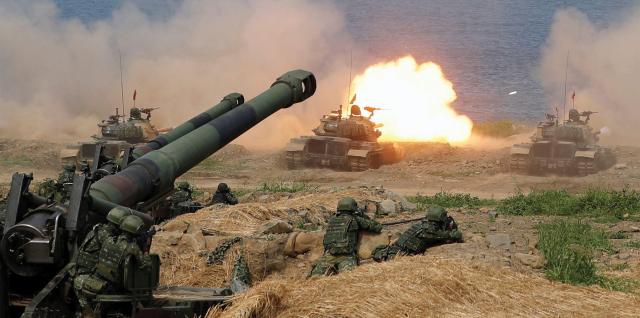
A denial defense strategy also means helping Taiwan defend itself. Here, Taiwan military forces conduct live-fire training during Exercise Han Kuang in 2019.
In part, this challenge is a function of time. Because the threat is already upon us, the Sea Services must ensure they can employ a forward denial defense of Taiwan both in the short and long term. It is also a function of uncertainty around concepts of operations, technology, and allied decision-making. In simple terms, the United States cannot afford to bet its future on one approach to deterring or defeating China. It cannot have single points of failure. It requires strategic redundancy—more than one way to contribute materially to a denial defense.
This means the Department of Defense should not bet solely on either exquisite new technologies or only the tried and true. The former, as in the examples of the DDG-1000–class destroyers, the littoral combat ships, and the Army’s Future Combat System, risks programmatic failure. But failing to exploit new technologies and concepts of operation risks the Sea Services being outpaced by an advancing PLA that is building not just a large force but also a cutting-edge one.
Similarly, the Sea Services should not bet entirely on either a long-range force operating largely from outside PLA striking range or solely on stand-in forces. The former may not live up to expectations in the event of war and may risk allied defection if it undermines confidence in U.S. resolve, while the latter may be too vulnerable to attack within the densest parts of Beijing’s strike envelope. Accordingly, the Navy and Marine Corps must pursue them together, both to guard against programmatic and operational failure and to present greater military difficulties and strategic dilemmas for Beijing and the PLA.
What should be deprioritized, then, is almost everything else (save the nuclear deterrent). This includes naval operations and posture in theaters other than Asia, including Europe and the Middle East, as well as capacity and presence for its own sake rather than warfighting efficacy. The basic point is that U.S. naval forces should prepare to mount an effective and politically credible denial defense of Taiwan, along with the nuclear deterrent needed to back it up. Everything else should be scaled down, pushed to the back, and, if need be, eliminated. This includes symbolic or assurance-oriented presence operations not connected to a robust blunt layer, as former Deputy Secretary of Defense Bob Work has compellingly argued.8
The reason for all this stems from a simple proposition: The main purpose of the U.S. Navy and Marine Corps is to fight and win the nation’s most important wars at a reasonable cost to the American people—not policing the sea lanes, showing the flag, or “facilitating—or deranging international trade.”9 By far the most significant threat to Americans’ prosperity, freedom, and security is China dominating Asia and from that position, the global economy. The Navy and the Marine Corps ought to be clear that their overriding responsibility lies in preventing this baleful outcome through a denial defense along the first island chain, and all other missions unconnected to this goal must take a back seat to that.
The Sea Services must now be laser focused on this core task to make the best use of the enormous resources the American people allocate to defense, as the Marine Corps is so commendably doing. Americans already spend a far greater proportion of their wealth on defense than almost any of their allies. It is therefore incumbent on the defense establishment to make the best use of that money as possible.
At the end of the day, this agenda will require more money. Our allies do need to spend more, but they will not be able to match China alone. The simple fact is the United States will need to spend more just to match China’s buildup. But the American people are most likely to support such an increase if they see the Navy and Marine Corps hyperfocused on implementing a strategy of denial.
No comments:
Post a Comment